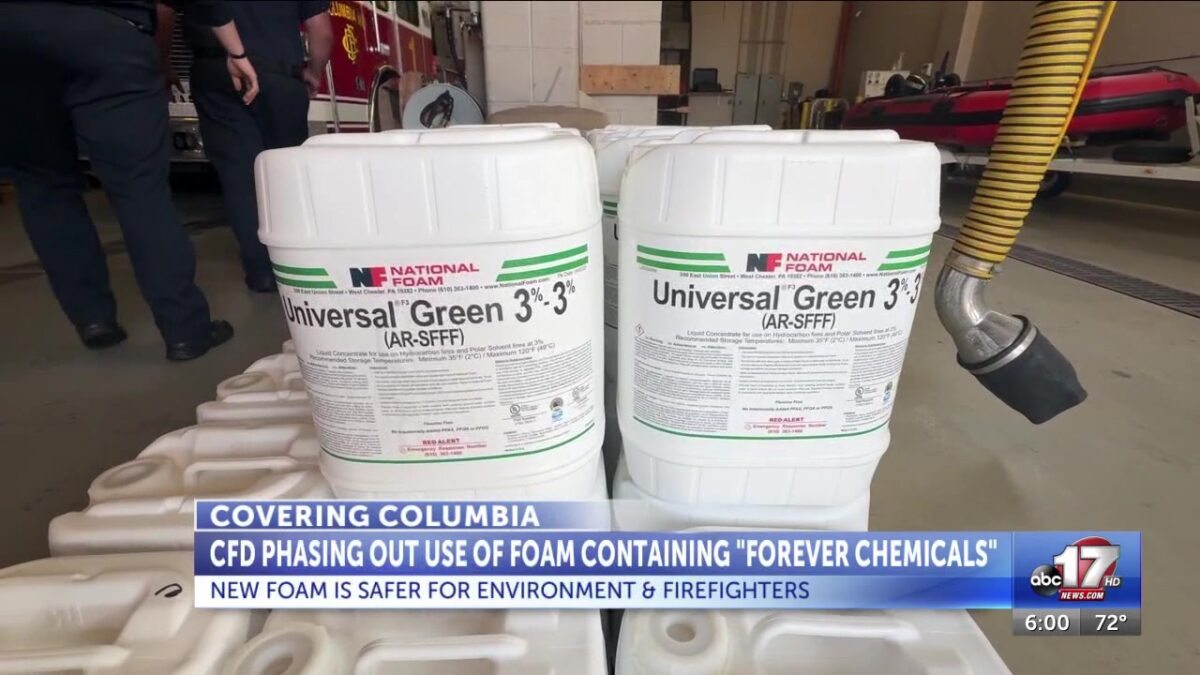Columbia Fire Department phasing out use of firefighting foam that contains ‘forever chemicals’

Erika McGuire
COLUMBIA, Mo. (KMIZ)
The Columbia Fire Department says it is phasing out a harmful fire fighting foam for its trucks because of its known environmental hazards, particularly its lasting impact on soil and water from PFAS chemicals.
Columbia Fire Department Assistant Chief Lester Shewmake said the new foam is a safer alternative.
“The new foam doesn’t have actually have the PHAS in there, its safer for our crews, it doesn’t get absorbed in the environment, the old foam would get absorbed into water and fish and other things,” Shewmake said.
According to the Interstate Technology Regulatory Council, aqueous film-forming foam is a highly effective firefighting product for fighting high-hazard flammable liquid fires. The chemical foam has been used at military installations, airports, petroleum refineries, bulk storage facilities and chemical manufacturing plants.
Firefighters tend to use the foam to extinguish fires that are difficult to fight with water alone, especially those that involve flammable liquids, like petroleum, according to ConsumerNotice.
“Fires that have alcohol in line, gasolines, diesels , alcohols, stuff that doesn’t readily mix water or it will kinda sit on water so just certain chemicals that water won’t put out the fire,” Shewmake said.
The firefighting foam comes in a concentrate mixed with water. It’s available in 3% and 6% formulas, depending on how much water is in the mix.
“The new stuff is stuff is three percent concentration when we’re using it we actually have an abductor that pulls it out of a bucket and we can set the percentage so our old foam was six percent the new stuff is 3%,” Shewmake said.
The foam works by coating the fuel for the fire and by cooling the blaze. It then covers the fuel in a film that prevents oxygen from reaching it and stops the fire from reigniting.
Consumer Notice says the foam is toxic, especially if it contains PFOS and PFOA.
The United States Department of Veterans Affairs and the Environmental Protection Agency note that the PHAS are present in small amounts in the flood of most people in the U.S., but for most people, they don’t pose a threat in small amounts.
However, they can be harmful if someone suffers from long-term exposure, such as firefighters who frequently use the product. The chemicals build up in the body and may cause negative health effects, including cancer.
“Anytime we can start reducing exposures that our personnel is exposed to, is a good situation for us we don’t want to cause any problems for them after they retired or later on,” Shewmake said.
Studies have shown the foam is also toxic to animals.
Boone County received a $82.684.40 from the Local Emergency Planning Committee that was distributed to the Columbia Fire Department, Boone County Fire Protection District and the Columbia Regional Airport.
CFD transitioned to the new foam Thursday.
BCFPD said it received the new foam but it is not in use yet.
According to Shewmake, the department is working with the Department of Natural Resources to find the safest way to dispose of the harmful foam and will get guidance from the government.